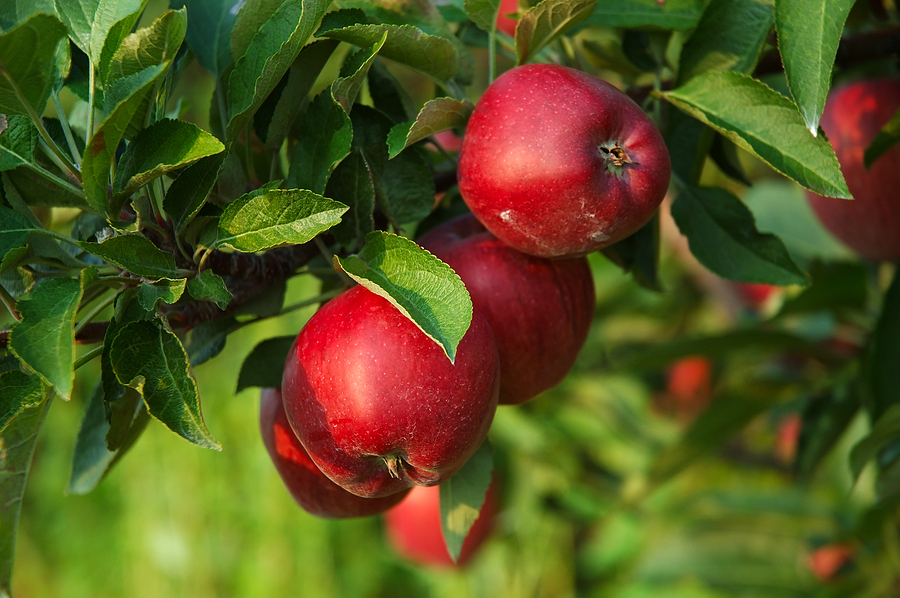A Story of Personal Change and Growth
I’ve been health-conscious since my late teens, when I became a strict vegetarian. That choice alone forced me into health food stores, where I was introduced to alternative medicine and lifestyles as well as organic food. But it wasn’t until I started eating with the seasons that I really learned to have a healthy diet.
I was raised in a middle-class household in the Philadelphia suburbs. In the 70s my mom was feeding us margarine, low fat, high fructose corn syrup desserts and wheat germ pancakes.
She was doing the best she could given the information that was out there. I went along with the status quo, albeit as a vegetarian, for 2 decades. But it wasn’t until I turned 40 that my life completely changed.
Where Does Your Food Come From?
I started eating meat again when I was 40. I was no longer a vegetarian, but I was very picky about where my meat came from. Source became extremely important. I began to purchase beef, chicken, turkey and pork from local farmers and co-ops.
But the biggest decision I made was to start to eating a strictly seasonal diet. To be fair, I now lived in Northern California and the growing season was year-round. Still, I had to consider, “No tomatoes or strawberries all winter?”
The more I thought about the mealy excuse for a winter tomato, the closer I came to giving it up. Strawberries do taste good all year round. But, thinking about a strawberry growing in Chile (a different hemisphere!) wasn’t very appealing to me.
I followed that Chilean strawberry from the field to a packing house, to a box, to a pallet, to a shipping container, to traveling across oceans to get to North America. Then, onto a tractor trailer to drive thousands of miles to my supermarket. Un-appetizing, to say the least.
What I Learned by Eating with the Seasons
I made the decision and commitment to only eat food that could be grown in the season in which I was living, in the place where I was living. I found and printed out a list of foods grown by month.
Again, to all you East Coast and middle country folks, my sincere apologies. As I perused the Northern California fruits and vegetables, month-by-month, I realized that there was an abundance of foods that I missed out on simply by being unaware. Can anyone say nettles?
I took the plunge. I joined yet another CSA but this was a sustainable, bio-dynamic farm, so the the bounty was especially nutrient dense. That was 9 years ago.
How Eating with the Seasons Changed My Life
To say that I live my life in a different way is an understatement. I see my life through a completely different lens! After that small decision, there has been a snow-ball effect of newer decisions and commitments.
Buying local. Buying sustainable. Buying non-GMO and organic. Buying heirloom produce and heritage breeds for eggs and meat.
I make most of my own household cleaners. I make most of my own hair, skin and face care. My own deodorant. My own “toothpaste.” I meditate daily and follow a spiritual practice. I feed my dogs a raw diet (raw meaty bones plus liver). I make my own flea products for my cat, when necessary. I use essential oils to treat most pet and human ailments. I use herbal tinctures and supplements to treat my high blood pressure instead of the prescription medication I had been using. The list literally goes on and on…
Read more: 4 Uncommon-Sense Guidelines for Food Safety and Nutrition
It All Started With a Seasonal Diet
I believe the first step – choosing to eat seasonally – was actually a choice to eat mindfully. And mindfulness was the key to my decade long transition.
I don’t promise that your life will change if you eat with the seasons, but I do promise that you will change. For now, I’m off to enjoy the last of this season’s tomatoes, eggplants, and peppers – but I’m already looking forward to winter squashes and rutabagas!
Thanks to Maria Blasko for participating in the [Grow] Network Writing Contest.
We have over $2,097 in prizes lined up for the Fall 2015 Writing Contest, including all of the following:
– A 21.5 quart pressure canner from All American, a $382 value
– A Survival Still emergency water purification still, a $288 value
– 1 free 1 year membership in the [Grow] Network Core Community, a $239 value
– A Worm Factory 360 vermicomposting system from Nature’s Footprint, a $128 value
– 2 large heirloom seed collections from Baker Creek Heirloom Seeds, valued at $103 each
– A Metro-Grower Elite sub-irrigation growing container from Nature’s Footprint, a $69 value
– 2 copies of the complete Home Grown Food Summit, valued at $67 each
– 3 free 3 month memberships in the [Grow] Network Core Community, valued at $59 each
– 4 copies of the Grow Your Own Groceries DVD video set, valued at $43 each
– A Bug Out Seed Kit from the Sustainable Seed Company, a $46 value
– 4 copies of the Alternatives To Dentists DVD video, valued at $33 each
– 4 copies of the Greenhouse of the Future DVD and eBook, valued at $31 each









COMMENTS(6)
Terrific and congrats to Maria Blasko. Shared on Late Bloomer Show on Facebook!
Very impressive, I would love to know what your recipes consist of. Finding safe products these days are usually done by trial an error, an hoping there is no reaction involved.
This year I needed to go to a food closet in my area, come to find out they use GMO’s also. It was a big disappointment besides causing intestinal problems.
Thank you.
I loved this, but what are rutabagus? am not sure I would be able to live this way as I live in England and
there isn’t a great deal of choice vegetable wise in the winter months, as a vegetarian this is important,
but I will give it a go with the occasional cheat!
loved this story.
would like to see several longer by same author, one on pet care, one on personal hygiene products, et cetera. can it be done?
thanks.
d. h.
I have lived in Japan for about 30 years and when I first came here all the vegetables in the supermarket and from the vegetable guy were seasonal. It was exciting to wait for winter squash to come out and the arrival of spring strawberries was an event as well as Japanese pears. Now many things come from far away so winter squash is available from Mexico and New Zealand year round.
Grapefruit is omnipresent either from America or South Africa depending on the time of year.
Miss those days:) and unfortunately a lot of relatively close produce for Tokyo came from the earthquake disaster area so now there is often a choice in stores between cheaper produce from that area or more expensive produce flown in from another part of the country.
Interesting article. I was especially intrigued to see your reference to alternative medications for heart disease, from which my husband suffers greatly and is now on 9 medications including a new one just recently ordered call amioderone. Others he is taking are imdur, liptetor, nitrogliserine, among many others. Please if you could contact me, I would like to know what you are using instead of all these drugs which are all toxic at the therapeutic level, per the JAMA’s own admission. I give permission to Marjorie and/or her staff to privately release my contact information to you. Thank you!